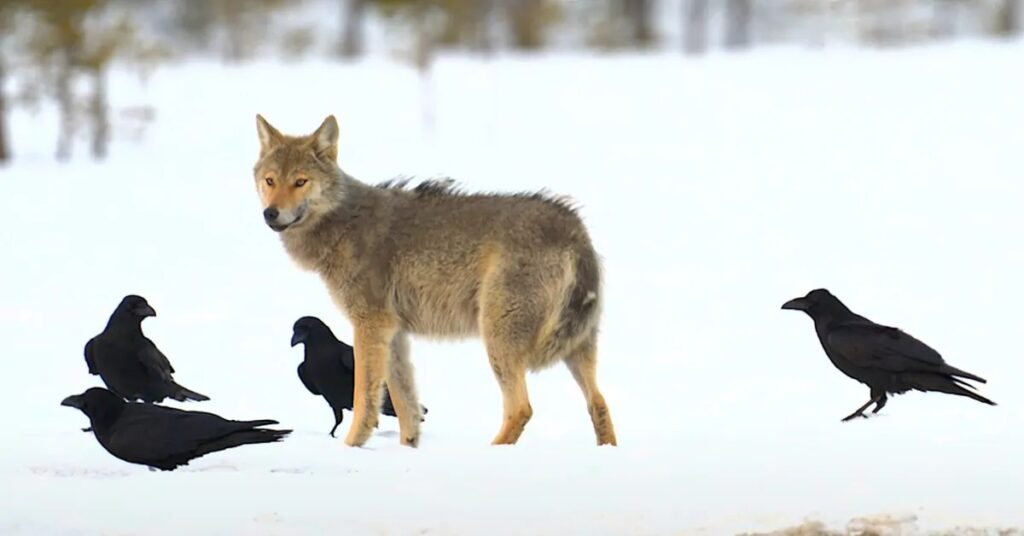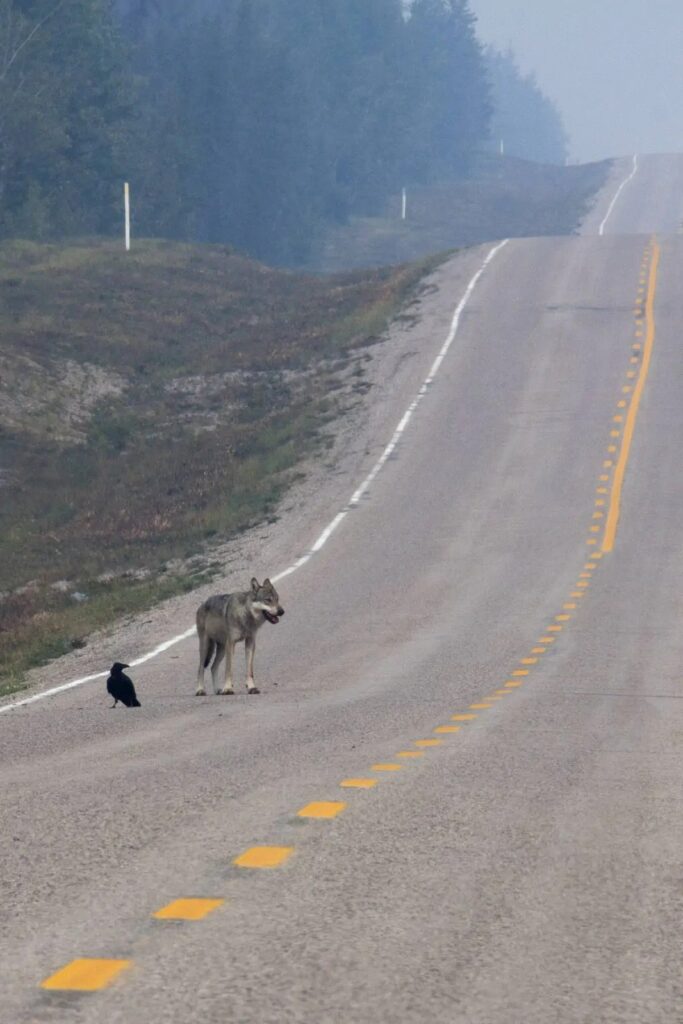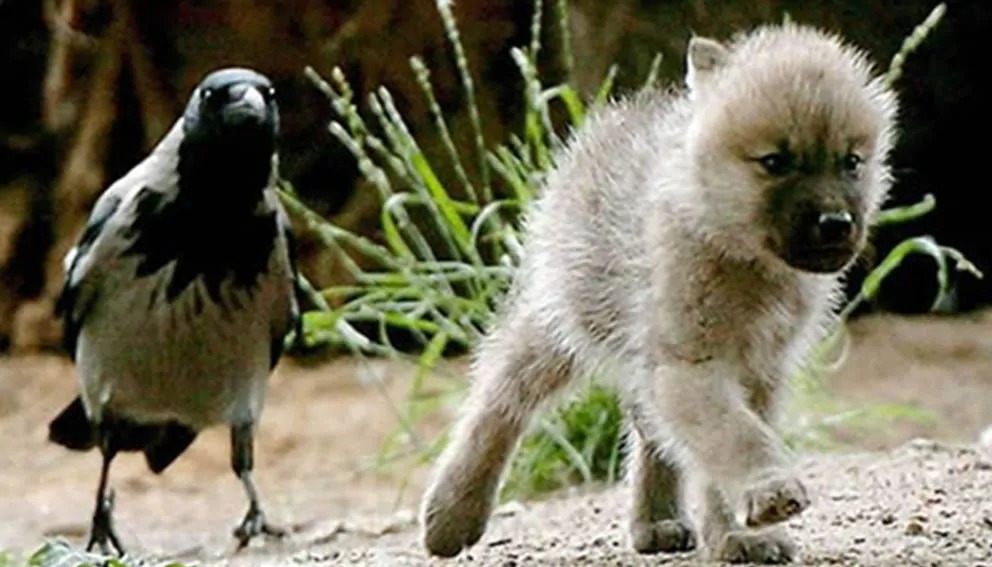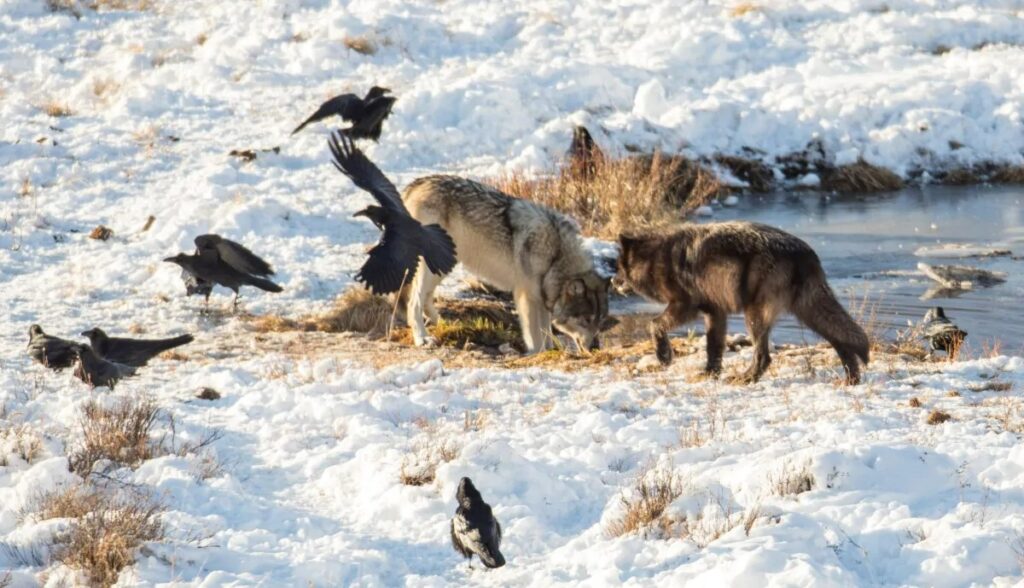
Ravens and wolves share a distinctive bond, and the former are often referred to as “wolf birds” in different cultures. These two remarkable creatures have established a special symbiotic connection that has endured for centuries.

Wolves and common ravens (Corvus corax) form a symbiotic partnership based on mutual benefit. Wolves, as adept predators, leave leftover prey, providing a plentiful food source for opportunistic ravens. Thanks to their close association with wolves, ravens are often present at the kill, promptly consuming carrion. Additionally, ravens may store some of the food for future use, and in certain instances, they may harvest the majority of a large animal carcass instead of the wolves.
The wolves take on the challenging task of not only dispatching the animal, whether it’s alive or not, but also of opening it up—an undertaking that would pose difficulties for the birds.
Although the benefits for the birds in this relationship are clear, it took scientists some time to unravel what the wolves gain. It appears that wolves derive significant advantages from ravens, relying on them to guide them to ailing or deceased animals, as revealed by research.
Ravens offer essential assistance to wolves by serving as scouts and messengers. Their sharp eyesight and capacity to cover vast distances allow them to identify potential prey or threats. Through their vocalizations and actions, ravens notify the wolves of these findings, enabling the pack to enhance their hunting effectiveness and safeguard their territories.

The communication between wolves and ravens is intricate and captivating. Ravens employ a diverse range of vocalizations and non-verbal signals to convey information to the wolves, including details about prey location or the presence of intruders. Emitting distinctive calls, they signal the presence of a carcass, capturing the attention of nearby wolves.
Ravens exhibit ‘staging behavior’ by hopping or flying a brief distance ahead of wolves, enticing them to follow and guiding them to potential hunting grounds. They may even use their wings to point in the direction of the prey.
Wolves react to the calls of ravens and comprehend their importance. Observations by researchers reveal wolves looking skyward when ravens call, actively acknowledging their avian companions. This communication and collaboration between the two species enhance their hunting success and overall survival.

The collaboration between wolves and ravens extends beyond scavenging. Ravens actively participate in the hunting process through a behavior known as tactical foraging. They trail hunting wolves, anticipating the flushing out of small mammals from hiding spots. Subsequently, ravens either seize the fleeing prey or attract the wolves’ attention, guiding them towards potential targets. This strategic hunting behavior proves mutually beneficial, enhancing the likelihood of a successful hunt.
Wolves, with their keen sense of smell and tracking skills, excel at locating prey. Ravens, with their nimbleness and opportunistic feeding behavior, enhance the wolves’ endeavors by capturing smaller or faster prey.

The connection between wolves and ravens goes beyond mere practicality. Evidence indicates that these animals establish social bonds and display signs of companionship. Observations reveal playful interactions between wolf pups and ravens, including chase games, mock fights, and tug-of-war. Ravens have been observed teasing young wolves by flying over them with sticks or even tugging their tails. Some scientists hypothesize that individual ravens may develop unique bonds with specific wolves within a pack.
Adding another layer to this distinctive relationship, scientists have discovered that ravens play a crucial role in the formation of wolf packs. In fact, packs are formed because of them.
The existence of wolf packs initially puzzled researchers, as pairs of wolves could efficiently take down prey and monopolize the food. The reason for wolves living in packs lies in the rapid consumption of the kill by ravens.

Given that ravens swiftly consume a substantial portion, up to 40 percent or more, of the carcass, two wolves cannot compete with their speed in claiming the food. Furthermore, hunting poses risks to the wolves, increasing the likelihood of fatal injuries.
As a solution, wolves opt to live and feed in packs, ensuring they can secure more food from a carcass, and individual wolves are not burdened with hunting every time. This way, the task of hunting can be distributed among the members of the pack.
Ravens and wolves are both highly intelligent and social animals that have learned to cooperate and coexist in nature. Their relationship is one of the most captivating examples of interspecies communication and symbiosis in the animal kingdom.

Leave a Reply